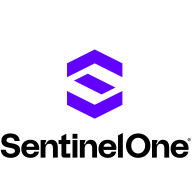

SentinelOne Singularity Complete and Cortex XDR by Palo Alto Networks are leading solutions in the endpoint security sector. SentinelOne appears to have an advantage, particularly in its offline capabilities and cost-effectiveness.
Features: SentinelOne Singularity Complete is known for its rollback functionality, enabling recovery without data loss, and AI-based threat detection that functions offline. It integrates smoothly with other security tools, providing vast endpoint visibility. Cortex XDR excels in firewall integration, offering a broad security perspective and effective threat correlation, and provides automatic blocking of suspicious activities via AI.
Room for Improvement: SentinelOne users seek more flexible policy management, efficient reporting, and simpler agent updates, with better integration with legacy systems. Cortex XDR users desire reduced false positives, enhanced third-party integration, and better endpoint management capabilities, alongside a smoother onboarding process and more customizable reporting features.
Ease of Deployment and Customer Service: Both products support flexible deployment across cloud environments. However, SentinelOne is praised for a faster implementation process and efficiency in hybrid cloud environments. Cortex XDR benefits from Palo Alto Networks' extensive support and community resources, especially valuable for large-scale complex deployments.
Pricing and ROI: SentinelOne Singularity Complete is considered cost-effective, with significant value through centralized management and competitive pricing options. It offers favorable pricing for small to medium businesses. Cortex XDR, although perceived as slightly more expensive, justifies the cost with its robust threat detection and integration within Palo Alto’s ecosystem, appealing to organizations heavily integrated with Palo Alto solutions.
They appreciate the rich telemetry data from the solution, as it provides in-depth threat identification.
Cortex XDR by Palo Alto Networks helps to reduce my total cost of ownership significantly.
I have seen a return on investment with Cortex XDR by Palo Alto Networks, as this product is offered at a minimal cost, and we can find a good ROI from it.
SentinelOne Singularity Complete has helped reduce my organization's mean time to detect by fifty percent.
Since then, I have not faced any intrusions, which is one reason I chose SentinelOne over ESET.
We have not faced any attacks since we implemented it.
The technical support from Palo Alto deserves a mark of ten because they reach out within an hour whenever assistance is needed.
There is no back and forth, and they know what we are asking for and come up with the best resolution for a solution.
If any of these services are missed, it becomes a problem in terms of support tickets, follow-up, or special configuration that needs to be done in the system.
They do a great job of figuring out the problem and pointing you to generic documentation or working with you to fine-tune a solution.
We are using the automated email process for support, and they respond within an hour or two hours sometimes.
A chat service would be beneficial.
Cortex XDR by Palo Alto Networks can be expanded anytime by purchasing another license without any issues related to scalability.
It's all auto-scale and auto-categorized, configuring automatically.
The tool's built-in automation for deploying the agents works well for large infrastructures like mine.
SentinelOne Singularity Complete is very scalable.
Cortex remains fast and responsive, even with increasing data and alerts.
The thresholds we've seen on our firewall boxes at some instances reached 80% to 85%, but even at that level of utilization, we don't observe any latency or any issues reported with respect to accessing the application.
Cortex XDR is stable, offering high quality and reliable performance.
It has caused problems with interoperability between third-party tools, which could lead to entire servers crashing or specific tools failing.
This indicates room for improvement in stability when interacting with other solutions.
Initially, there were issues, particularly on the management side, but now the console is much more stable.
Improving reporting and dashboard customization, along with the addition of real-time and exportable reports, would help SOC teams greatly.
The inclusion of this feature would allow the application of DLP policies alongside antivirus policies via a single agent and console, making it more competitive as other OEMs often offer DLP solutions as part of their antivirus products.
If the per GB data could be provided at a certain level free of cost or at the same cost which the customer is taking for the entire bundle, that would be better.
The only thing that prevented the attack from succeeding was a free version of Malwarebytes.
Providing a single pane of visibility for the end user would be beneficial.
It's challenging to prevent a user from manipulating their privileges or someone else's of others, and it's difficult to control what users can access at the organizational level.
The pricing on SentinelOne is far more reasonable and cheaper than Cortex XDR by Palo Alto Networks.
I would say it is definitely not a cheap product, considering how mature it is and how scalable all Palo Alto products are together.
Cortex XDR is perceived as expensive by some customers, yet offers dynamic pricing.
If you want protection, you have to pay the price.
There are other products that are less expensive, but I tell my clients that in security, they cannot cut corners or look for the cheapest solution.
Reputation and quality are important, but especially in today’s economy, price is a significant factor.
It incorporates AI for normal behavior detection, distinguishing unusual operations.
The product provides automation responses in case of a threat attack, severity assessments, centralized manageability, and comprehensive compliance features, resulting in reduced costs.
It includes machine learning to easily analyze data and detect complex threats across endpoints, networks, or clouds.
I have an advanced app providing visibility of all my endpoints, which was not the case before.
SentinelOne has a feature to decommission automatically, which has been fantastic.
There's also automation that gives my team free time, preventing them from having to look for every alert.
| Product | Market Share (%) |
|---|---|
| SentinelOne Singularity Complete | 5.1% |
| Cortex XDR by Palo Alto Networks | 3.4% |
| Other | 91.5% |


| Company Size | Count |
|---|---|
| Small Business | 43 |
| Midsize Enterprise | 18 |
| Large Enterprise | 43 |
| Company Size | Count |
|---|---|
| Small Business | 87 |
| Midsize Enterprise | 44 |
| Large Enterprise | 77 |
Cortex XDR by Palo Alto Networks delivers comprehensive endpoint security, integrating well with other systems to offer robust threat detection and real-time protection through AI-driven analytics.
Cortex XDR by Palo Alto Networks offers advanced endpoint protection and threat detection through AI and behavior-based analytics. Its user-friendly design simplifies integration with firewalls, delivering multi-layered protection with low resource consumption. Valued for policy management, USB control, and incident correlation, Cortex XDR enhances threat management and real-time threat hunting capabilities. However, users note challenges with third-party integration, reporting, and dashboard automation. Agent performance across operating systems and memory consumption are areas for improvement, alongside reducing false positives and simplifying endpoint management and setup.
What features does Cortex XDR offer?
What benefits should be considered in reviews?
Cortex XDR is crucial in industries requiring robust endpoint protection, such as finance, healthcare, and technology. It supports malware detection, behavioral analysis, and ransomware mitigation across endpoints, including remote work environments, providing comprehensive threat visibility and security policy management. The solution's integration with firewalls and specialized industry requirements enhances security posture in diverse operational settings.
SentinelOne Singularity Complete delivers advanced endpoint protection leveraging AI-driven threat detection and behavior analysis for efficient malware and ransomware response. Its standout features enhance security insights and ensure comprehensive endpoint management.
SentinelOne Singularity Complete provides robust ransomware recovery through unique rollback capabilities and seamless integration with various security solutions. Its machine learning enhances endpoint protection, minimizing false positives and automating responses. While praised for real-time threat monitoring, incident management, and asset management, it faces challenges in managing the console, customizing UI, and maintaining policy flexibility. Some users report difficulties with deployment and integration with existing systems, and enhanced reporting, alert management, and documentation are desired. Its appeal extends to deploying across multiple operating systems, offering comprehensive security coverage and facilitating cybersecurity compliance.
What standout features does SentinelOne Singularity Complete offer?Industries implement SentinelOne Singularity Complete for its AI capabilities in advanced endpoint protection, particularly against malware and ransomware. It's utilized across diverse operating systems, aiding in real-time threat monitoring and facilitating compliance. Organizations use it for vulnerability assessments and asset management, ensuring optimal protection in complex IT environments.
We monitor all Endpoint Detection and Response (EDR) reviews to prevent fraudulent reviews and keep review quality high. We do not post reviews by company employees or direct competitors. We validate each review for authenticity via cross-reference with LinkedIn, and personal follow-up with the reviewer when necessary.